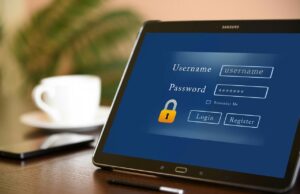Information Security (InfoSec) is the backbone of protecting sensitive data. Whether it’s personal records, business documents, or financial details, keeping information safe from theft, manipulation, or loss is more critical than ever.
When I first started learning about Information Technology (IT), I quickly realized that Information Security and Cybersecurity are not the same thing—though they’re often confused. Information Security is the broader concept of safeguarding all types of data, whether physical or digital, while Cybersecurity is a subset of information security, focused specifically on protecting digital systems, networks, and data from cyber threats like malware and phishing. If you’re curious about the differences and want to learn more about cybersecurity, check out this article for a deeper dive.
Organizations use risk management to identify and mitigate potential security threats, while Incident Response (IR) helps them react quickly to breaches. Data security, application security, and security operations all play a major role in building a strong Information Security foundation.
But this is just the beginning! Future articles will dive deeper into topics like authentication, authorization, encryption, and the role of security tools like antivirus software, helping to equip you with the knowledge needed to navigate the evolving landscape of information security.
Fundamentals of Information Security: The CIA Triad
In Information Security, we follow some key principles to keep data safe. One of the most important frameworks is the CIA Triad, but don’t worry—it’s not the CIA you’re probably thinking about! The CIA Triad stands for Confidentiality, Integrity, and Availability, and it’s at the heart of information security. Let’s dive into each concept.
Confidentiality
Confidentiality means making sure only authorized people can access certain information. This can be achieved with encryption and access controls. Think of different departments within an organization—users in the Finance department, for example, should not have access to files in the HR department, and vice versa. Another everyday example is online banking: Your financial information may be (should be) protected through multi-factor authentication (MFA) and encryption, ensuring only you can access your account details.
Integrity
Integrity is all about ensuring that data is accurate and trustworthy. It’s the safeguard against tampering. Businesses use tools like checksums and audit trails to help maintain data integrity. For example, if someone intercepts an email with a contract and changes it before the recipient gets it, the integrity is compromised. That’s where digital signatures and hash functions come in to verify that the data remains unaltered.
Availability
Availability ensures that your information is accessible when needed. If your system or network goes down, it can lead to big problems. Backups and redundant systems are key to preventing downtime. For example, imagine an online retailer during a big sale. If their website crashes, they lose customers and sales. By implementing failover systems and ensuring data backups, businesses can keep things running smoothly, even when the unexpected happens.
By understanding and applying these principles, organizations can create a secure environment for their data, making sure it stays protected and always accessible.
Risk Assessment and Management
Risk assessment and management is essential for identifying and minimizing threats to your information systems. It’s a proactive approach that involves these key steps:
Identify Assets: Start by taking an inventory of all your hardware and software assets. After all, you can’t protect what you don’t know exists, so understanding what needs safeguarding is the first step.
Analyze Threats: Pinpoint potential threats that could compromise your assets, from malware to physical theft. Understanding the risks allows you to prioritize defense strategies.
Evaluate Vulnerabilities: Assess weaknesses in your systems that could be exploited. Not all vulnerabilities are equal—some might be high-risk, while others may be less severe but more easily exploitable. Prioritize based on impact and likelihood.
Implement Controls: Apply security measures to mitigate risks based on your assessment. Every organization is different, so the controls you implement should be tailored to your business’ needs and resources.
Monitor and Review: Continuously monitor the effectiveness of your security controls. Automating this process can help reduce human error and ensure a consistent, ongoing defense strategy.
This proactive, strategic approach helps strengthen your information security posture and reduces the impact of potential security incidents.
Security Policies and Frameworks
Security policies are vital for guiding how an organization manages its information security. A strong policy framework sets clear expectations for users and systems.
Some of the key components include:
- Asset Management Policies: These policies track and manage hardware and software assets throughout their lifecycle, from procurement to decommissioning.
- Access Control Policies: Define who can access information and under what circumstances.
Secure Configurations Policies: Devices and systems need to be set up with security in mind from the start. Secure configuration policies help minimize vulnerabilities and reduce potential attack surfaces.
Incident Response Policies: Even with the best defenses in place, breaches can still happen. Incident response policies outline the steps to take in case of a security incident, helping organizations react quickly and effectively.
- Security Awareness Training: Educating employees is a critical part of any information security strategy. Security awareness training helps staff recognize threats, especially social engineering tactics like phishing.
Acceptable Use Policies: Clarify acceptable behavior and usage of company resources.
Frameworks like the CIS Controls, NIST (National Institute of Standards and Technology), and ISO 27001 provide structured guidelines for developing these policies. They help ensure that my organization’s practices align with industry standards and effectively address security challenges.
Defensive Security Measures

Defensive security measures are also essential for protecting information systems. They include various techniques and technologies designed to prevent unauthorized access and attacks. Let’s explore some of the key methods that are commonly used in this field.
Cryptography and Encryption
Cryptography is the practice of securing information by transforming it into an unreadable format. This ensures that only authorized users can read the data. Encryption is often used to protect sensitive information, whether it’s in transit or at rest.
There are several types of encryption:
- Symmetric encryption: Uses the same key for both encryption and decryption.
- Asymmetric encryption: Involves a public key and a private key, offering an added layer of security.
Using strong encryption standards like AES (Advanced Encryption Standard) is essential, especially for securing communications like emails and files.
Intrusion Detection and Prevention Systems
Intrusion Detection Systems (IDS) monitor network traffic for suspicious activity. If a potential breach is detected, these systems alert you to investigate further.
On the other hand, Intrusion Prevention Systems (IPS) take the defense a step further. They not only detect threats but also actively block them in real-time.
By implementing both IDS and IPS, organizations can:
- Detect threats in real-time
- Prevent unauthorized access
- Improve overall security posture
By analyzing patterns and logging incidents, these systems can help maintain a secure environment.
Identity and Access Management (IAM)
IAM is a framework for managing user identities and their access rights. It’s critical in ensuring that only authorized users can access certain data or systems.
Within AIM, the focus is on:
- Authentication: Verifying the identity of users.
- Authorization: Granting permissions based on user roles.
- Accountability: Monitoring user actions for compliance and tracking who did what.
Multi-factor authentication (MFA) is a common practice to implement and address IAM access. It adds layers of security by requiring users to provide two or more verification factors. This significantly reduces the chances of unauthorized access.
Final Thoughts
As technology continues to evolve, information security isn’t just a necessity—it’s a foundation for protecting sensitive data, maintaining trust, and ensuring business continuity. From understanding the core principles of the CIA Triad to implementing robust defensive security measures and establishing clear security policies, the path to a secure information system is multi-faceted but crucial. By applying these best practices, from strong security policies to cryptography and intrusion prevention to identity management, you’re setting your organization up for long-term protection against cyber threats. Remember, security isn’t a one-time effort—it’s a continuous, proactive journey. Stay informed, stay vigilant, and make information security a priority every step of the way.




